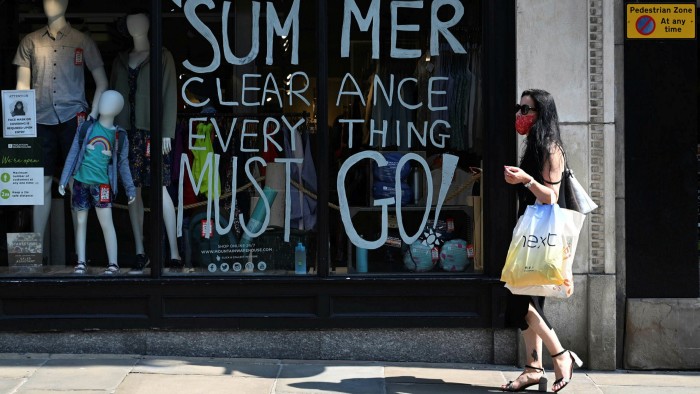The economy is too weak for inflation to return

Roula Khalaf, Editor of the FT, selects her favourite stories in this weekly newsletter.
It has been almost 40 years since the US and most of Europe grappled with serious inflation. Over the past decade the greater risk on both sides of the Atlantic has been that prices will fall. Since the coronavirus pandemic, however, rampant spending by central banks and governments has led to expectations that change is afoot.
Gold, the classic hedge against currency debasement, hit an all-time nominal high this month — though the price is yet to surpass, in real terms, the peak hit in 1980. Monetary aggregates, used by the Bank of England and the Bundesbank in the postwar period as bellwether of price pressures but largely ignored in recent decades, are back in fashion. Broad money — a measure that includes not only cash and deposits, but some highly liquid assets too — has rocketed across advanced economies as officials bloat the state’s balance sheet in response to the pandemic. Some economists, turning to the history books, muse that inflation will follow. Not necessarily.
The threat of widespread and persistent price rises matters now more than ever. Inflation exacerbates social divides, affecting the worst off the most. It also weighs on confidence and decision-making — hardly ideal in an environment where businesses are understandably hesitant. As lockdowns ease, prices could jump. Businesses may want to make the most of pent-up demand as rules on social distancing are relaxed. Shocks to supply chains could bump up costs.
But if those pressures are to prove persistent and dangerous, wages must rise, too. A driver of double-digit inflation in the 1970s was that expectations of price rises were so entrenched that ever-higher prices were met with ever-louder calls for higher wages. A hallmark of the low inflation era, meanwhile, has been low wage growth, despite low unemployment. That has left inflation largely confined to asset prices, with the full impact of central banks’ money printing still to be felt in the cost of everyday goods and services.
Now, with the jobs market crashing, a spiral of wages and prices looks unlikely in the extreme. Economists ought to remember, too, that monetary aggregates were ditched for good reason. Money matters, but it is not everything — setting policy on the basis of aggregates proved tricky and they were less reliable indicators of inflation than hoped.
Deflation remains the greater threat right now. But huge debt burdens carry inflation risks — chief among them, fiscal dominance. Central banks often take credit for bringing prices under control, pinning it on another feature of the low inflation era: their independence to set policy as they see fit. Less well acknowledged is the degree to which that independence chimed with the political mood of the day. The tide is showing worrying signs of turning, notably in the US where Donald Trump has used Twitter to take aim at the Federal Reserve.
No technocrat operates entirely free of influence; they are, after all, appointed by lawmakers. Admirable as Paul Volcker, Fed chairman in the 1980s, was in standing up to public opprobrium and keeping rates high, it helped that he could count on Ronald Reagan’s support. Volcker’s predecessor Arthur Burns, on the other hand, was pressed by Richard Nixon to cut rates ahead of the 1972 election — and did. Some governments have locked in low borrowing costs by issuing bonds that will not mature for another 30, 50 or even 100 years, but not all have been so wise. When the time comes for central banks to raise rates, this generation of policymakers — like their forebears — will face pressure. If they buckle, then inflation could finally return.
Comments